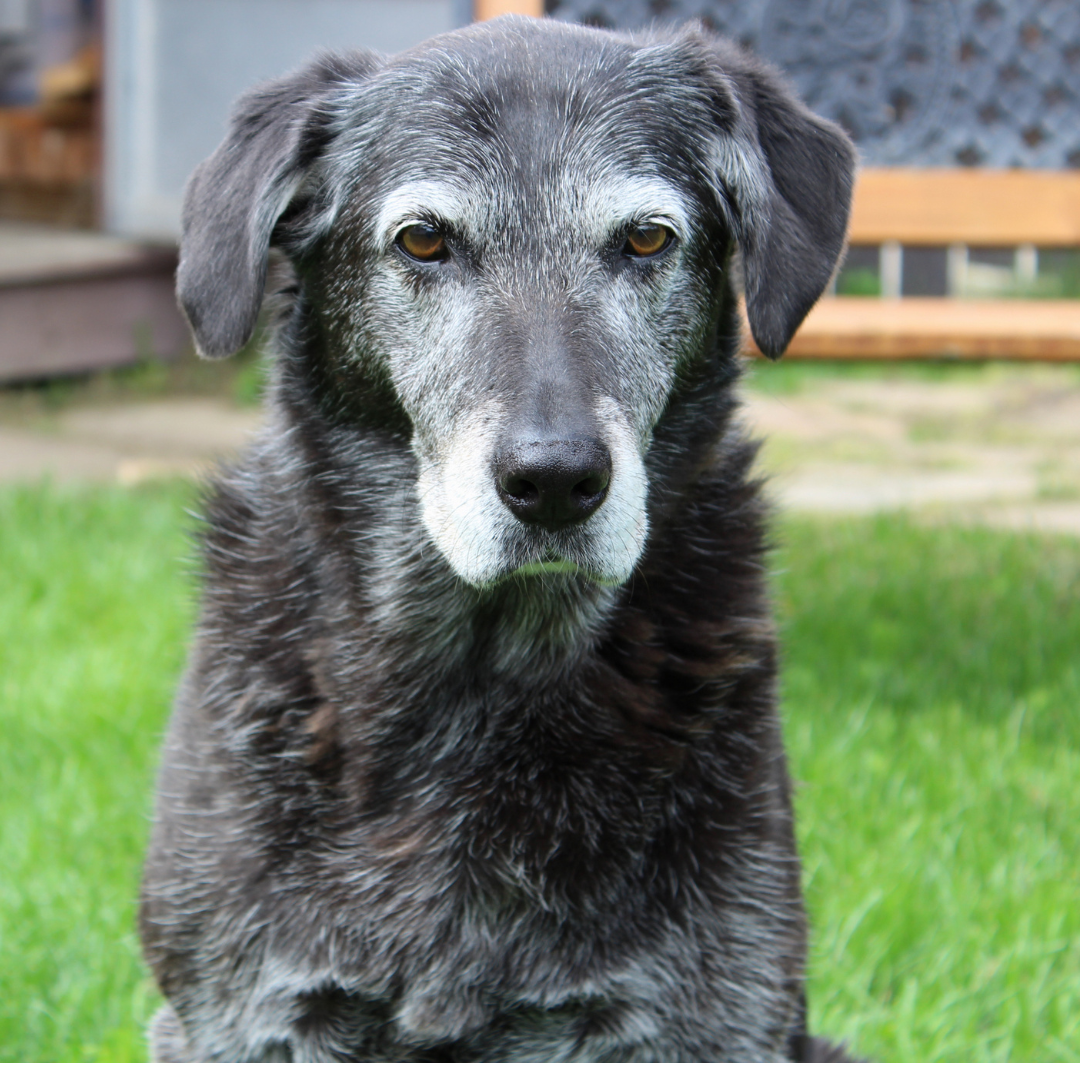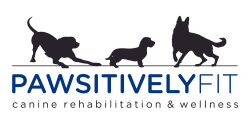Did you know that there are often visible, physical changes that happen when your dog is experiencing chronic pain? Some may even be brushed off or unrecognized in the canine professional community (yes, your vet or your groomer may not realize…). Read on to arm yourself with knowledge you should know!

This is the fourth blog in our series on signs of chronic pain. If you’ve missed the other 3, check out the blogs on behaviour, abilities and posture due to chronic pain. A great way to review if things have changed with your dog (as always change is the important variable here), we suggest comparing what you see now to photos of your dog you’ve taken over the years. What should you look for? Read on!
Physical body changes that may indicate chronic pain.
1. Coat Changes
This can sound a little strange until you’ve seen it for yourself, but a dog that has pain can develop thicker patches of fur, swirls of fur areas or even loss of fur. But why does this happen?
When joints or muscles are used abnormally, whether its more use OR less use, the fascia or soft tissues underneath the fur can become stiff in immovable. This can cause the coat to change. Again, it’s important to know what’s normal for your dog to recognize changes. It may be easiest to compare how your dog looks NOW versus pictures from the past. Look for these 3 things:
- A “lion’s mane” appearance over their chest and shoulders
- This is the result of overuse of the front limbs to compensate for hind limb problems
- Blowing or excessive loss of fur over specific areas (in my own dog, I have seen this over her knees)
- Swirls of fur or kinks in your dogs coat
Remember, changes in your dog’s coat or fur signals that something is changing underneath. Question why!

Riley had pain in his hips and had associated hair swirls in these areas.

Example of a “lions mane” over the chest and shoulders.
2. Changes in the Feet
Have you ever worn high heels and your feet have hurt? Have you ever sprained an ankle and the OTHER ankle or foot starts to hurt? Then you can appreciate how posture and pain can affect the feet and this is no different for our dogs.
Most breeds should have nice tight, neat feet. With pain and weight shifting off of painful limbs, the overloaded feet can become flatter and more splayed. This can cause pain in the foot as a result.
Also check the nail and the toe pads. Uneven wearing in nails or foot pads can be the result of pain, off-loading or poor proprioception (i.e. awareness of where a leg is).

Splayed toes due to too much weight through the limb.
3. Changes in muscle mass
Loss of muscle mass is a hugely underappreciated result of pain though it should be obvious. When a limb or joint hurts it will be used less. And when it’s not used, it will experience muscle loss aka move it or lose it! Look for a difference is muscle symmetry from the left side of the body to the right. The limb that is now overloaded may also become larger as a result, further impacting this imbalance.
There may also be a change in muscle bulk from the front to the back as hind legs are unloaded to the front or vice versa.
4. Change in size of joints
Think your dog’s joints look bigger? You might be right. When a joint has arthritis and cartilage wears down, the body does it’s best to try to rebuild the damaged tissue but it doesn’t do a great job. The joint ends up larger due to reactive bone growth, swelling and thickening of soft tissues.
After a cruciate ligament tear that’s been left to heal without surgery, the body will create what is called a medial buttress, which is a thickening of the medial (thinking inside of the knee) side of the knee.

Enlarged hock (ankle) joints

Dog’s post-cruciate tear often develop thickened stifles (knees)
5. Changes in coat colour
Dog’s that lick or chew at themselves may be doing so due to pain. This could be referred pain from another area in the body (such as a rib or trapped nerve) or pain right at the site of chewing or licking. It can be difficult to determine in some dogs if they are licking due to pain, allergies or anxiety. Considering the overall context of which your dog has started this behaviour can help narrow down the cause. Your vet or canine physiotherapist is a great resource as well.
Other dogs may lick or chew due to generalized pain. A repetitive behaviour can be soothing to them. Think of a parent rocking a baby in a rocking chair. Or it can be like rubbing your toe after you’ve stubbed it, it’s interrupting the pain signal to the brain.

Note the areas of darkened fur on Chief’s front legs from licking. Chief has arthritis in his hind legs.

Kevin was licking at his front leg due to referred pain from rib joint issues.
I’ve realized my dog and I need help!
First question – have you seen your vet already? It’s a great place to start. But controlling pain alone won’t get your dog back to their normal self. They need MUSCLE and that’s where Pawsitively Fit can help. Want to chat about your dog’s specific needs? Reach us in the chat!
We have had nothing but positive experiences with Shauna. Our dog (only 4) had been suffering with unknown hind end issues, nerve pain, muscle tremors, and inability to walk some days. Our vet gave us so many meds to try, nothing was helping. They said our only options were to go to a neurologist or unfortunately, it was what it was. With him being so young we decided to try physio. Shauna very quickly was able to sort out the problem and start the healing journey. After 4 sessions our boy was back to his crazy self and we are so so beyond thankful that we found Shauna. His quality of life is back and he’s now enjoying walks and playing ball in the yard! I would recommend Shauna to anyone and everyone.




